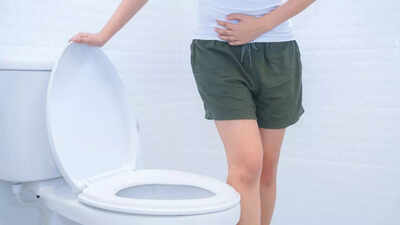
Foamy urine is the appearance of bubbles in the toilet after urination. While this can understandably cause concern, particularly relating to kidney health, research indicates that only about one-third of people who notice foamy urine actually have protein in their urine, which is a key indicator of kidney damage. A study published in the Clinical Journal of the American Society of Nephrology explains that foaming is caused not only by proteins but also by certain amino acids, bile salts, and other natural compounds in urine. Understanding the causes of foamy urine helps both patients and healthcare providers differentiate between harmless foam and signs of potential kidney problems, supporting timely diagnosis and treatment when necessary. This distinction is crucial for patient awareness and medical decision-making.
What does foamy urine indicate about kidney health
Foamy urine itself does not damage the kidneys, but it may point to conditions that do. Persistent protein in the urine, known as proteinuria, indicates that the kidneys’ filtering units, called glomeruli, might be impaired. When proteins leak through these filters over time, it can lead to declining kidney function or chronic kidney disease. Certain diseases, such as glomerular illnesses or inherited tubular disorders, can cause continuous protein or amino acid loss into urine.Proteinuria: Presence of protein in urine and its implications on kidney functionThe persistent presence of protein in urine (proteinuria) is a key indicator of kidney dysfunction. Under normal conditions, healthy kidneys prevent large proteins, such as albumin, from leaking into urine. When kidney filters are damaged, these proteins escape, causing foamy urine. Proteinuria itself furthers kidney injury by promoting inflammation and fibrosis, contributing to a vicious cycle of worsening kidney function.Proteinuria is linked to serious health issues like swelling (edema), malnutrition, abnormal lipid levels (dyslipidemia), and heightened cardiovascular risk. Controlling proteinuria is a crucial treatment goal in glomerular diseases, often managed by medications including corticosteroids or immunosuppressants, though such treatments require careful monitoring for side effects.
Symptoms signaling kidney damage alongside foamy urine
Foamy urine can sometimes indicate kidney issues, especially when it occurs with other warning signs. These symptoms include:
- Swelling in the legs, ankles, or around the eyes
- Unexplained fatigue or weakness
- Dark or blood-tinged urine
- Increased frequency or urgency of urination
- Difficulty controlling high blood pressure
If foamy urine appears alongside these signs, it likely suggests proteinuria or another kidney disorder. Doctors may recommend laboratory tests, such as the urinary protein-to-creatinine ratio, to detect kidney damage even if standard dipstick tests show minimal or no protein. Individuals with recurrent kidney diseases, hereditary kidney conditions, or relapsing glomerular illnesses should report foamy urine promptly, as early recognition considerably improves treatment success.
Causes of foamy urine beyond kidney disease
Foamy urine isn’t always linked to kidney issues. Various substances in urine can create foam, including:
- Proteins and amino acids: Proteins act as natural surfactants stabilizing bubbles, while amino acids like methionine and tyrosine may contribute, particularly in some tubular disorders.
- Phospholipids: These molecules come from cell breakdown in urine, which might happen during minor bleeding or infections without proteinuria.
- Bile salts: Elevated bile salts in urine, common in liver or gallbladder diseases or from certain medications and laxatives, can generate foam.
- Other metabolites: Naturally-occuring fatty acids and small compounds can also form bubbles, especially if urine is concentrated or if metabolism changes.
Recognizing these different causes helps avoid unnecessary worry for those without underlying kidney disease.
Prevention of foamy urine and maintaining kidney health
Managing foamy urine revolves around addressing the underlying causes. Staying well-hydrated reduces urine concentration and thus foam formation. Regular kidney health monitoring is crucial, especially for individuals with risk factors such as diabetes, high blood pressure, or family history of kidney disease. A balanced diet, avoiding excessive protein intake when advised, and limiting medications that affect kidney or liver function can also support prevention.Treating liver, gallbladder, or metabolic conditions that increase foam-inducing compounds in urine may reduce foamy urine. It’s important to report persistent or worsening foamy urine to a healthcare provider for urine tests and follow-up evaluations, including protein-to-creatinine ratio assessments when necessary.
When to seek medical advice if your urine is foamy
Occasional foamy urine caused by rapid urination or dehydration is usually harmless. However, persistent foam, especially when accompanied by other kidney-related symptoms, warrants medical evaluation. Diagnostic tests may include urine dipsticks, 24-hour urine collection for protein measurement, urine albumin-to-creatinine ratio, kidney function tests (serum creatinine and blood urea nitrogen), blood pressure monitoring, imaging studies, and occasionally kidney biopsy.Prompt diagnosis enables early intervention to prevent progression of kidney disease, preserve function, and reduce complications.How to protect your kidneys and keep them healthyProtecting kidney health can prevent serious causes of foamy urine. Tips include:
- Drinking adequate amounts of water throughout the day
- Managing blood pressure within healthy ranges
- Controlling blood sugar if diabetic
- Maintaining a healthy weight and lifestyle
- Avoiding excessive use of pain medications and other nephrotoxic substances
- Getting regular health check-ups, especially if you have risk factors
Disclaimer: This article is for informational purposes only and should not be considered medical advice. Please consult a healthcare professional before making any changes to your diet, medication, or lifestyle.Also Read | Are inhalers and nasal sprays harming your health more than helping; find out now








